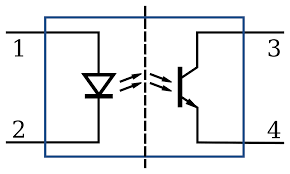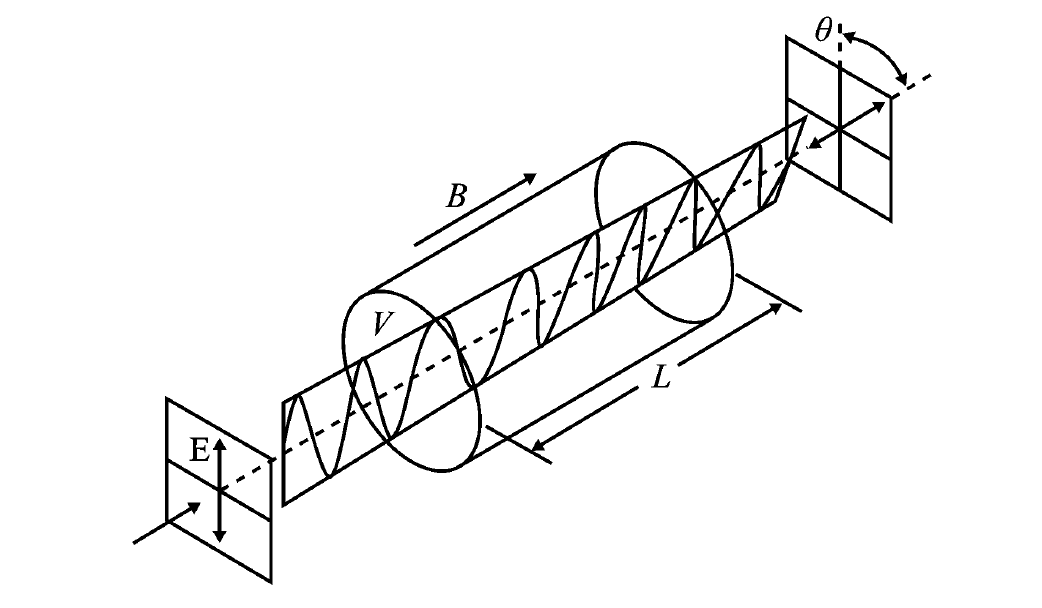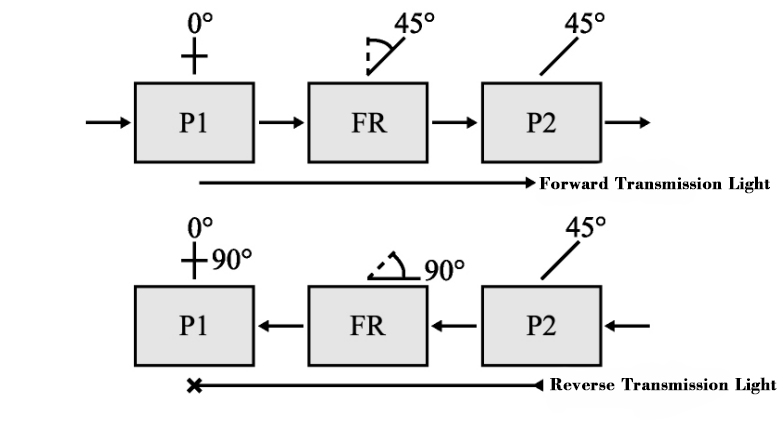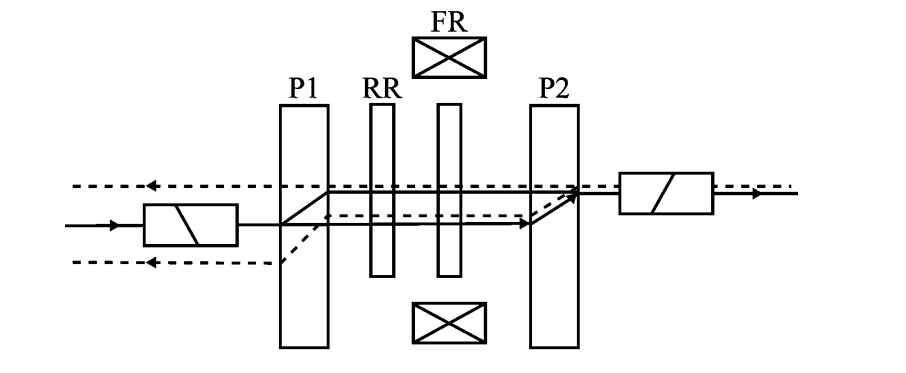Introduction
As the output power of lasers continues to increase, the research significance of isolators becomes increasingly important. This article details the working principle and internal structure of the optoelectronic isolator.
How does an optocoupler work
What are Optical Isolators?
Optical isolator(also called an optocoupler, photocoupler, or opto-isolator) is a passive optical device that only allows one-way light to pass through. Its working principle is based on the non-reciprocity of Faraday rotation. The light reflected by the fiber echo can be well isolated by the optical isolator. Optical isolators mainly utilize the Faraday effect of magneto-optical crystals. The characteristics of optical isolators are: low forward insertion loss, high reverse isolation, and high return loss.
An optical isolator is a passive device that allows light to pass in one direction but prevents it from passing in the opposite direction. Its function is to limit the direction of light so that light can only be transmitted in one direction. The light reflected by the optical fiber echo can be reflected by the optical isolator. Very good isolation and improve light wave transmission efficiency.

opto isolator symbol
Types of Optical Isolators:
Optical isolators are available in various types, including:
TOSA/ROSA (Transmitter Optical Sub-Assembly/Receiver Optical Sub-Assembly): TOSAs include laser diodes and necessary components to generate optical signals, while ROSAs detect and convert these signals back to electrical form. They're used in fiber optic communications for transmitting and receiving optical data signals.
FOC (Fiber Optic Coupler): FOC isolators use fiber optic technology to couple, split, or combine optical signals. They aid in directing light along different paths without signal loss or interference, supporting applications in telecommunications and networking.
POSA (Planar Optical Waveguide Substrate Assembly): POSA isolators work on the principle of total internal reflection to guide and isolate light waves along planar optical waveguides. They are used in various photonic applications for high-speed data transmission and optical system protection.
Each type has its unique advantages and applications. TOSA/ROSA are critical in data transmission and reception, FOC is suitable for coupling and managing optical signals, and POSA is effective in guiding light along planar waveguides, enhancing signal quality and isolation. Understanding the distinctions between these isolator types is crucial to selecting the most appropriate option for specific applications.
Optical isolator principle and structural composition
How does an optocoupler work
Optical isolators only allow forward light transmission and isolate reverse light. The key to breaking the reversibility of the optical path is the magneto-optical effect of the magneto-optical crystal. The magneto-optical effect is the basis for realizing optical isolators. The magneto-optical effect was discovered by Faraday in experiments and is also called the Faraday effect. In 1842, Faraday discovered that the plane of polarization of plane polarized light is rotated after passing through a medium in a magnetic field, as shown in the figure below.

Faraday Effect
The Faraday effect shows that a magnetic field parallel to the direction of light propagation will cause the polarization state of the transmitted light to rotate. The rotation angle θ is:
θ=VLB (1)
In the formula: V is the characteristic parameter of the material, called Verdet constant (Verdetconstant); L is the distance that light passes through the medium; B is the magnetic induction intensity.
The magneto-optical crystal and the external magnetic field together form a Faraday rotator. The medium that can produce magneto-optical effects is called magneto-optical crystal. Commonly used magneto-optical crystals include yttrium iron garnet (YIG) crystal, terbium aluminum garnet (TAG) crystal and terbium gallium garnet (TGG) crystal.
Among them, yttrium iron garnet crystal is transparent in the 1200-1500 nm band, has small absorption loss and large magneto-optical constant, but its low transmittance in the visible light region and low laser damage threshold limit its wider application. Terbium aluminum garnet crystal has high transmittance and high Verdet constant, but it cannot be melted uniformly and large-sized single crystals cannot be obtained, which limits its application range.
Terbium gallium garnet crystal is transparent in the 400-1100nm band (excluding 470-500nm), and has the advantages of large magneto-optical constant, low transmission loss, high thermal conductivity, and high resistance to laser damage threshold. It is currently the best in this band. One of the magneto-optical materials, it is the best magneto-optical material for making optical isolators. The volume of the magneto-optical crystal and the external magnetic field have a great impact on the volume of the optical isolator. Usually, too large magneto-optical crystals and external magnets are not conducive to integration in fiber lasers.
Structural composition of optical isolator
According to polarization characteristics, optical isolators can be divided into two types: polarization-dependent and polarization-independent. The classic structure of the polarization-dependent optical isolator is shown in the figure, which mainly consists of three parts: polarizer P1, analyzer P2 and Faraday rotator FR.

Classic structure of polarization dependent optical isolator
When light is incident in the forward direction, the polarization direction of the incident light is consistent with the direction of the transmission axis of the polarizer P1, and all of it passes; then, after passing through the Faraday rotator FR, its polarization direction is rotated clockwise by an angle of 45°, and it is exactly the same as the transmission axis of the analyzer P2. The axis directions are the same and all pass through. Therefore, forward light can be transmitted with low loss.
When light is incident in the opposite direction, the analyzer P2 plays a polarizing role. Only the part of the incident light whose polarization direction is consistent with the direction of the transmittance axis of the analyzer P2 can reach the Faraday rotator FR. After passing through the FR, the polarization direction remains normal. When the clock hand rotates 45° (due to the non-reciprocity of the Faraday rotator), the polarization direction of the reversely incident light is exactly perpendicular to the transmission axis of the polarizer P1 (functioning as an analyzer), and is thus blocked by the polarizer P1. Can't pass. Therefore, reverse light cannot pass through the optical isolator.
There are many structures of polarization-independent optical isolators. The main principle is to change the polarization direction of two orthogonally transmitted linearly polarized lights so that they can recombine (cannot recombine) to the output end (input end).
A typical structure of a polarization-independent optical isolator is shown in the figure below. The isolator consists of two parallel polarization beam splitters (beam combiners) P1 and P2, a 45° reciprocal rotator (half-wave plate) RR and a 45° Faraday rotator FR configuration.

A typical structure of polarization-independent optical isolator
The unpolarized light is decomposed into mutually perpendicular O light and E light after passing through the parallel polarizing beam splitter P1. After passing through the half-wave plate RR, the polarization planes of the two are rotated 45° clockwise. After passing through the Faraday rotator FR, the two polarization planes are The plane of polarization is rotated 45° clockwise again, for a total of 90° clockwise. At this time, the O light turns into E light, and the E light turns into O light. After passing through the parallel polarization beam combiner P2, it combines into a beam of unpolarized light and passes through the isolator.
After the reverse non-polarized light passes through the parallel polarization beam combiner P2 (which functions as a beam splitter at this time), the reverse non-polarized light is also decomposed into mutually perpendicular O light and E light. After passing through the Faraday rotator FR, the two The polarization plane rotates 45° clockwise, and then passes through the half-wave plate RR. Since the half-wave plate RR is a reciprocal rotator, the polarization planes of the two will rotate counterclockwise 45°, and the total rotation is 0°, that is, no polarization occurs. At this time, the parallel polarization beam splitter P1 still plays the role of beam splitting, and the O light and E light are divided into upper and lower parts for transmission and no longer enter the input end, that is, the reverse light is isolated.
In summary, it can be seen from the structures of polarization-dependent optical isolators and polarization-independent optical isolators that the function of the Faraday rotator is to rotate the polarization plane of the incident plane polarized light.

Nantian Electronics a professional distributor of electronic components, providing a wide range of electronic products, saving you a lot of time, effort and cost through our meticulous order preparation and fast delivery service.
Share this post


